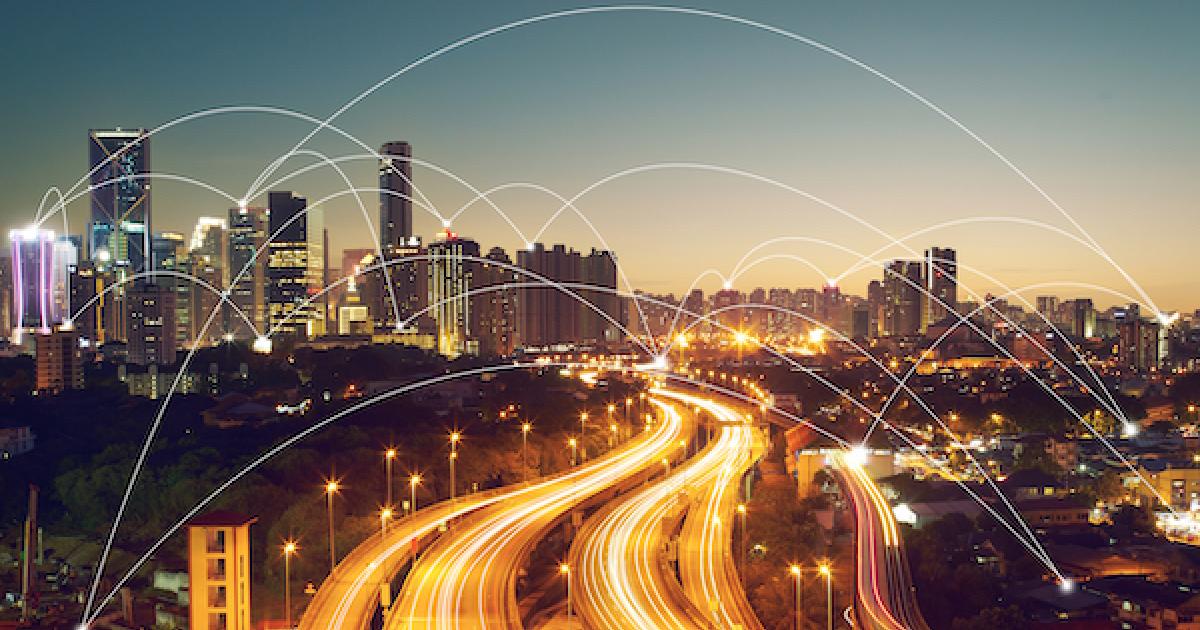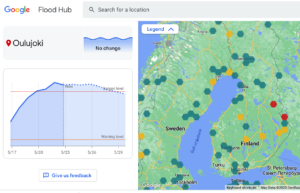
This article is sponsored by Environmental Defense Fund.
The Inflation Reduction Act (IRA) is a major win for American businesses, offering companies billions of dollars in tax credits, loans and other incentives to accelerate progress toward environmental sustainability. Many believe it is destined to be transformative — if those incentives are implemented efficiently and effectively.
In this series of articles, business leaders from top companies will share how they are implementing IRA provisions and what advice they would give to other companies eager to capitalize on all the IRA has to offer.
Eaton is a global technology leader in power management solutions that works to improve the quality of life and the environment through the use of power management technologies and services that reduce their environmental footprint and by offering sustainable products and solutions to their customers.
Recently, I spoke with Chris Hess, vice president of public affairs at Eaton, to learn more about how the company is thinking about the IRA.
Victoria Mills: Eaton was a strong advocate for the IRA. Why is that? How did you weigh in?
Chris Hess: Eaton was — and remains — an advocate for the IRA because this legislation is accelerating the adoption of clean and renewable technologies that are critical to building a sustainable and resilient future. We also know that consistent and reliable investments in the electrical grid are necessary to make the energy transition possible. The IRA includes incentives that provide certainty to the market so investments can be made to electrify the power and transportation sectors.
Our team at Eaton weighed in primarily on the IRA programs related to updating the electrical infrastructure to support vehicle electrification. We spoke directly with members of Congress and the federal agencies responsible for such programs in the automotive and heavy-duty segments. We offered insights on how to modify and expand current programs and create new ones to drive the investment needed to enable the energy transition — and to amplify its benefits.
Mills: How has its passage changed the business context for your company?
Hess: At Eaton, we have long been committed to making power safer, more sustainable and more efficient for our customers and partners. We do this by helping them reduce emissions through the design of low-carbon technologies and solutions that enable the addition of more renewable energy sources, storage and electric vehicle infrastructure to their operations.
The passage of the IRA has strengthened the business context for Eaton because it has accelerated and advanced the development of new technologies, products and solutions that will enable the energy transition. These are the solutions we’re focused on and committed to developing at Eaton.
Mills: What are key IRA programs you are benefiting or expect to benefit from, directly or indirectly?
Hess: Eaton is impacted by most of the clean energy portions of the IRA, including automotive and heavy-duty truck electrification programs, funding to update the utility grid and residential power management infrastructure, and investments in renewable energy storage and microgrids.
The demand for electric vehicle charging infrastructure is in turn increasing demand for power management system upgrades, and Eaton provides the charging infrastructure and power management solutions that make this possible.
Mills: What’s a specific example of how you (or your customers) will benefit from an IRA grant or incentive?
Hess: Since Eaton is impacted by most of the clean energy provisions in the law, we’ll benefit from investments in updating the utility grid and residential power management infrastructure, renewable energy storage and microgrids. The IRA’s emphasis on transportation electrification will increase demand for electric vehicle charging infrastructure, which in turn will require power management system upgrades. Eaton provides the charging infrastructure and power management solutions that make this possible.
Mills: How does the IRA support progress toward your climate goals, and those of your customers?
Hess: The IRA supports progress toward Eaton’s climate goals and those of our customers because it incentivizes the adoption of clean energy technologies that reduce carbon emissions. The programs in the IRA will also help Eaton meet our commitment to reduce our operational carbon footprint 50 percent by 2030. We are also excited about the opportunity to reduce upstream and downstream (i.e., Scope 3) emissions 15 percent by 2030. This includes the embedded carbon and use-phase carbon in our solutions, how our solutions help our customers reduce their own emissions and how our solutions contribute overall to a low-carbon future.
Mills: What needs to happen to make sure the IRA delivers on its potential?
Hess: America’s energy infrastructure needs to become more secure, sustainable and resilient to make the energy transition a reality. The IRA investments in modernizing our electrical grid are a down payment on what’s needed to achieve the full potential of the clean energy transition. The growing electrification transportation, building systems and industry will drive a substantial increase in power demand by 2050. In addition, the highly distributed nature of renewable energy is upending the traditional power delivery model. Traditional electrical power infrastructures must be upgraded, with software and services optimizing every process, to realize new energy benefits.
The highly distributed nature of renewable energy is upending the traditional power delivery model. We need both private-sector innovation and supportive public policies to enable a systems approach transforming power generation and distribution for homes, buildings and utilities.
Mills: What would you like to see other companies doing now regarding the IRA? What’s one piece of advice you’d like to share?
Hess: At Eaton, we have a dedicated team working with our customers to better understand how the IRA can help them adopt clean energy technologies. We encourage organizations to do the same, and to work with their partners (including companies like Eaton) to ramp up their adoption of renewable energy and zero-emission vehicles. In this way, we can accelerate progress toward the clean energy future we all want.
- SEO Powered Content & PR Distribution. Get Amplified Today.
- PlatoData.Network Vertical Generative Ai. Empower Yourself. Access Here.
- PlatoAiStream. Web3 Intelligence. Knowledge Amplified. Access Here.
- PlatoESG. Automotive / EVs, Carbon, CleanTech, Energy, Environment, Solar, Waste Management. Access Here.
- PlatoHealth. Biotech and Clinical Trials Intelligence. Access Here.
- ChartPrime. Elevate your Trading Game with ChartPrime. Access Here.
- BlockOffsets. Modernizing Environmental Offset Ownership. Access Here.
- Source: https://www.greenbiz.com/article/how-ira-accelerates-clean-energy-adoption
- :has
- :is
- $UP
- 15%
- 2030
- 2050
- a
- About
- accelerate
- accelerated
- accelerates
- accelerating
- Achieve
- Act
- addition
- adopt
- Adoption
- advanced
- advice
- advocate
- Affairs
- agencies
- All
- also
- American
- an
- and
- approach
- ARE
- article
- articles
- At
- automotive
- BE
- because
- become
- been
- believe
- benefit
- benefiting
- benefits
- Better
- billions
- both
- Building
- business
- Business Leaders
- businesses
- by
- CAN
- capitalize
- carbon
- carbon emissions
- carbon footprint
- certainty
- changed
- charging
- Chris
- clean energy
- Climate
- commitment
- committed
- Companies
- company
- Congress
- consistent
- context
- contribute
- create
- Credits
- critical
- Current
- Customers
- dedicated
- Defense
- delivers
- delivery
- Demand
- Design
- destined
- developing
- Development
- DID
- directly
- distributed
- distribution
- do
- does
- doing
- dollars
- down
- drive
- e
- eager
- EDF
- effectively
- efficient
- efficiently
- Electric
- electric vehicle
- embedded
- Emissions
- emphasis
- enable
- encourage
- energy
- Environment
- environmental
- Environmental Sustainability
- Every
- example
- excited
- Expand
- expect
- Federal
- focused
- Footprint
- For
- from
- full
- funding
- future
- generation
- Give
- Global
- Goals
- grant
- Grid
- Growing
- happen
- Have
- heavy-duty
- help
- helping
- highly
- Homes
- How
- How To
- HTML
- HTTPS
- i
- if
- impacted
- implemented
- implementing
- improve
- in
- Incentive
- Incentives
- incentivizes
- includes
- Including
- Increase
- increasing
- indirectly
- industry
- inflation
- Infrastructure
- infrastructures
- Innovation
- insights
- investment
- Investments
- IRA
- IT
- ITS
- jpg
- Key
- Know
- Law
- leader
- leaders
- LEARN
- Legislation
- Life
- like
- Loans
- Long
- low-carbon
- made
- major
- make
- Making
- management
- management system
- many
- Market
- Meet
- Members
- model
- modernizing
- modify
- more
- more efficient
- most
- must
- Nature
- necessary
- Need
- needed
- needs
- New
- New technologies
- now
- of
- offer
- offered
- offering
- on
- ONE
- ones
- operational
- Operations
- Opportunity
- optimizing
- or
- organizations
- Other
- our
- overall
- own
- partners
- passage
- payment
- percent
- piece
- plato
- Plato Data Intelligence
- PlatoData
- policies
- possible
- potential
- power
- president
- primarily
- process
- Products
- Programs
- Progress
- provide
- provides
- public
- quality
- Ramp
- Reality
- realize
- reduce
- reduction
- regarding
- related
- reliable
- remains
- Renewable
- renewable energy
- require
- residential
- resilient
- responsible
- safer
- same
- scope
- Sectors
- secure
- see
- segments
- Series
- Services
- Share
- So
- Software
- Solutions
- Sources
- specific
- Sponsored
- storage
- strong
- substantial
- such
- support
- supportive
- Supports
- sure
- Sustainability
- sustainable
- system
- Systems
- tax
- team
- Technologies
- Technology
- that
- The
- the Law
- their
- Them
- These
- they
- Thinking
- this
- those
- Through
- to
- top
- toward
- traditional
- transformative
- transforming
- transition
- transportation
- truck
- TURN
- understand
- Update
- updating
- upgraded
- upgrades
- use
- utilities
- utility
- vehicle
- Vehicles
- vice
- Vice President
- want
- was
- Way..
- we
- weigh
- What
- which
- why
- will
- win
- with
- Work
- working
- works
- would
- would give
- you
- Your
- zephyrnet










